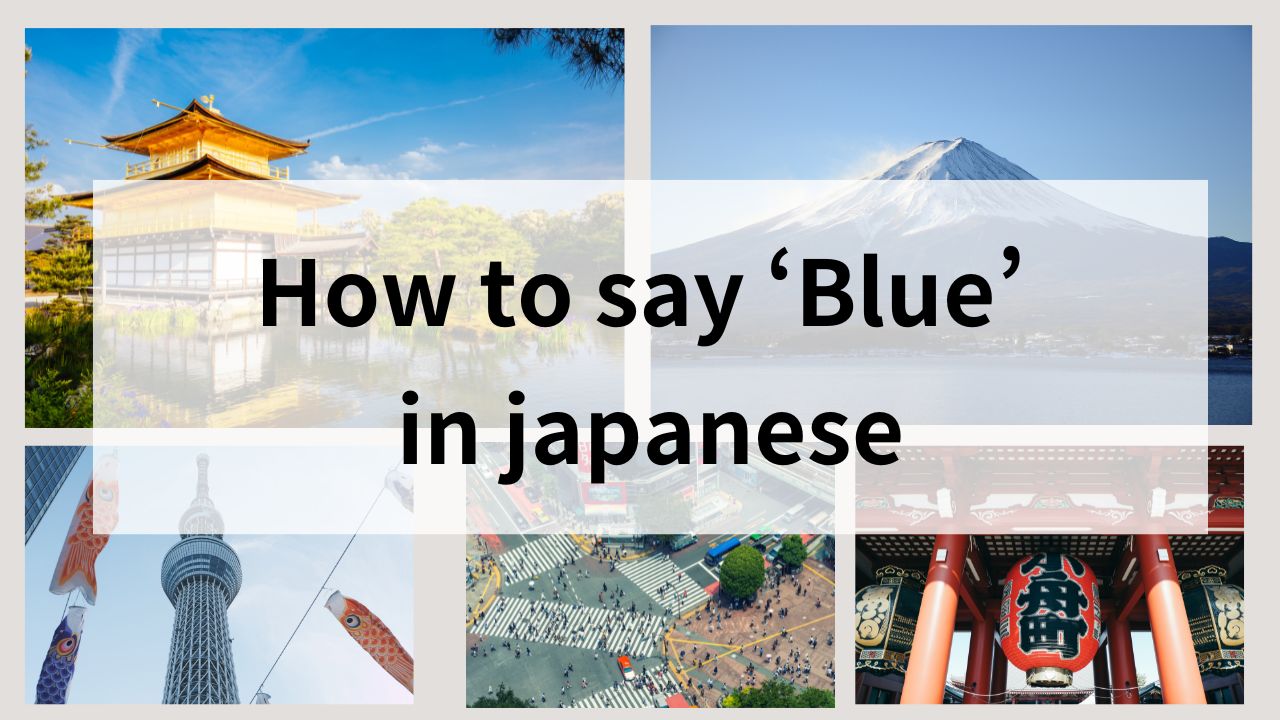Are you curious about how to say “blue” in Japanese? The color blue has a unique cultural significance in Japan, often encompassing various shades and meanings. In this guide, we will explore the Japanese word for “blue,” its cultural implications, and how it is used in everyday conversation.
How Do You Say “Blue” in Japanese?
The Japanese word for “blue” is 青 (Ao). This term is used broadly to describe not only blue but also green shades, reflecting the Japanese perception of color. The kanji for blue is also 青, which is commonly used in both written and spoken contexts.
The Japanese Word for Blue: Ao (青)
“Ao” is a versatile term used in various contexts, including nature, clothing, and emotions. Here are some examples:
- 青い空 (Aoi sora): “Blue sky.”
- 青い海 (Aoi umi): “Blue sea.”
- 青信号 (Ao shingou): “Green traffic light” (in Japan, green is often referred to as “ao”).
Kanji for Blue: 青
The kanji for blue, 青, is commonly used in various expressions and compounds. It carries additional meanings, such as youth or freshness. For instance, the word 青春 (Seishun) means “youth” and incorporates the character for blue.
Does Saying “Blue” Work in Japan?
Using the English word “blue” may not be universally understood in Japan, particularly among older generations. To ensure clear communication, it’s best to use the Japanese term “ao” (青).
The Cultural Significance of the Color Blue in Japan
The color blue has a rich cultural history in Japan, often associated with nature, tranquility, and even spirituality. It appears in traditional art, clothing, and various cultural practices.
Blue as a Symbol of Nature and Tranquility
In Japanese culture, blue represents the colors of the sky and sea, evoking a sense of calm and serenity. It is often used in designs and motifs that aim to reflect harmony with nature.
Blue in Japanese Folklore and Mythology
Blue plays a role in Japanese folklore, where various spirits and deities are depicted in blue hues. For instance, the blue dragon is a symbol of power and protection in Japanese mythology.
Blue in Traditional Art and Fashion
Traditional Japanese art often features blue, especially in ukiyo-e prints where indigo dye is used. Additionally, blue fabrics, such as those dyed with indigo, hold cultural importance in clothing and textiles.
Practical Applications of “Blue” in Japanese
Understanding how “blue” is used in Japanese can enhance your conversations and cultural awareness.
Talking About Blue in Daily Conversation
Here are some examples of how “ao” is used in everyday conversation:
- 青い車が欲しい (Aoi kuruma ga hoshii): “I want a blue car.”
- 青空が好きです (Aozora ga suki desu): “I like blue skies.”
Blue-Related Idioms or Expressions
The color blue is featured in several Japanese idioms and expressions, reflecting its cultural significance. Here are some common examples:
- 青は藍より出でて藍より青し (Ao wa ai yori idete ai yori aoshi): “Blue comes from indigo, but is bluer than indigo.” This proverb emphasizes the idea that one can surpass their origins or teachings.
- 青二才 (Ao nisai): Literally “blue youth,” this phrase refers to someone inexperienced or immature.
These idioms highlight the metaphorical richness of blue in Japanese thought and language. Learning them can provide deeper insights into Japanese values and communication.
Common Shades of Blue in Japan
In Japan, “ao” (青) can refer to various shades, including:
- 藍 (Ai): Indigo blue, often used in traditional textiles.
- 水色 (Mizuiro): Light blue or aqua, often associated with water.
- 紺色 (Koniro): Dark blue or navy, commonly used in clothing.
When discussing colors in Japan, it’s helpful to specify the shade of blue to convey your message accurately.
Blue in Japanese Cuisine or Products
Blue is less common in Japanese cuisine compared to other colors. However, blue foods, such as blue potatoes or certain fish, may be mentioned. Additionally, blue-themed products, like blue pottery and textiles, enjoy popularity for their aesthetic appeal.
FAQs
Here are some frequently asked questions about the color blue in Japanese culture and language.
Is Blue Different From Green in Japanese?
Yes, in Japanese, “ao” (青) can refer to both blue and green, creating some confusion for learners. Context usually clarifies the intended shade.
How Do You Write “Blue” in Japanese?
You can write “blue” as 青 (Ao) in kanji, あお (Ao) in hiragana, or using katakana for specific contexts, though it is less common.
Conclusion
The color blue, or “ao” in Japanese, embodies a rich tapestry of meanings and cultural significance. By understanding its usage in language and traditions, you can deepen your appreciation for this captivating color and its role in Japanese society.








